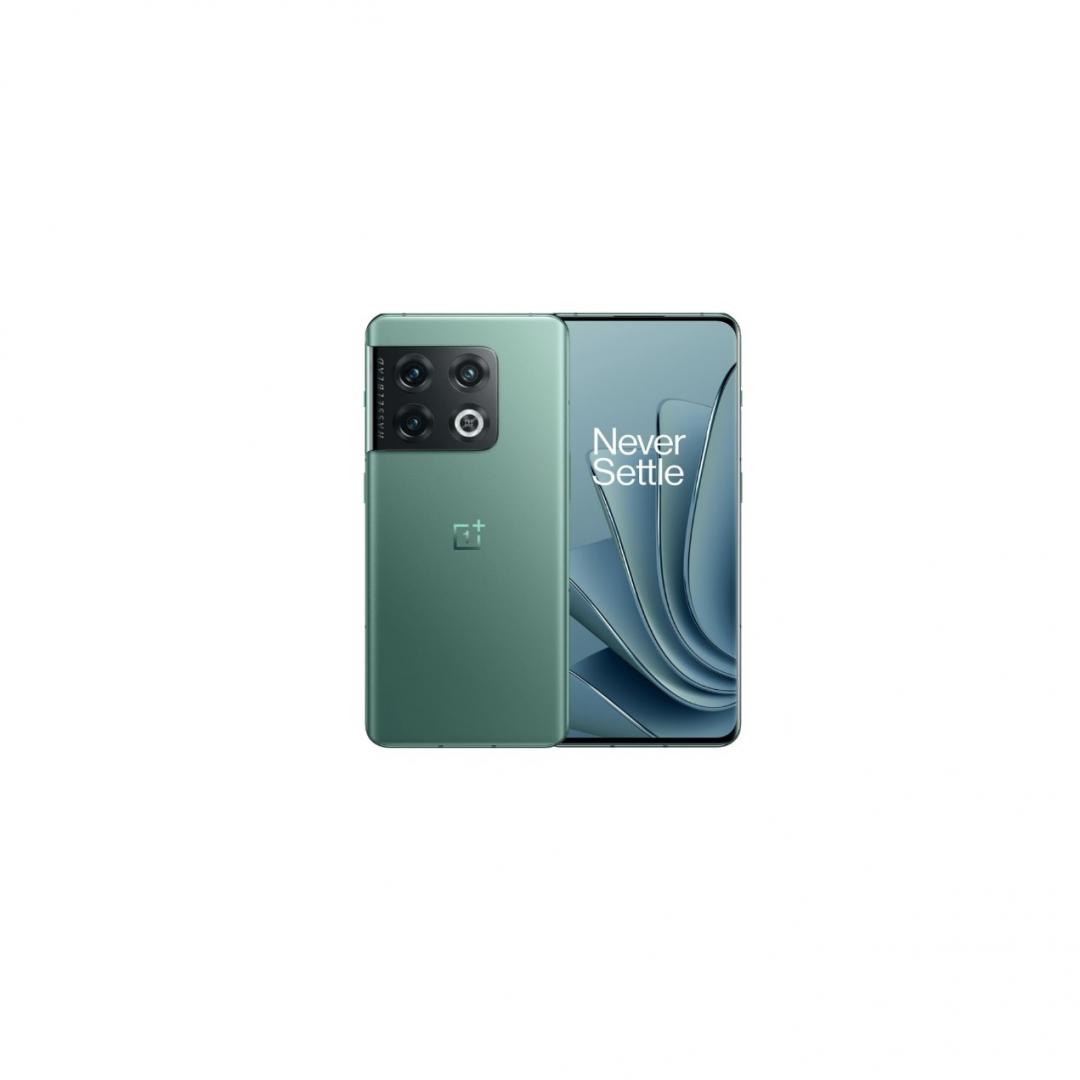Affiliate links on Android Authority may earn us a commission. Learn more.
OnePlus 10 Pro review second opinion: An imbalanced reset
Published onApril 16, 2022
The OnePlus 10 Pro, the latest high-end smartphone from OnePlus, comes across as an attempt to reset the company’s direction. After some pushback on the high cost of 2021’s OnePlus 9 Pro, the company dialed back the price and adjusted the specs of its new phone to realign itself with fan expectations. The effort, though appreciated, hasn’t necessarily coalesced in the way OnePlus probably hoped.
The lone device, which isn’t part of a larger family or series (yet), competes with category leaders from Apple, Samsung, and Google, all of which have multiple entries in their flagship lineups. That means the 10 Pro has a lot to prove. In our full review, we found it came up short. In this OnePlus 10 Pro review second opinion, I want to take another look to see if it’s really the phone OnePlus fans deserve.
Our take: OnePlus 10 Pro review
Finding comfort in the familiar
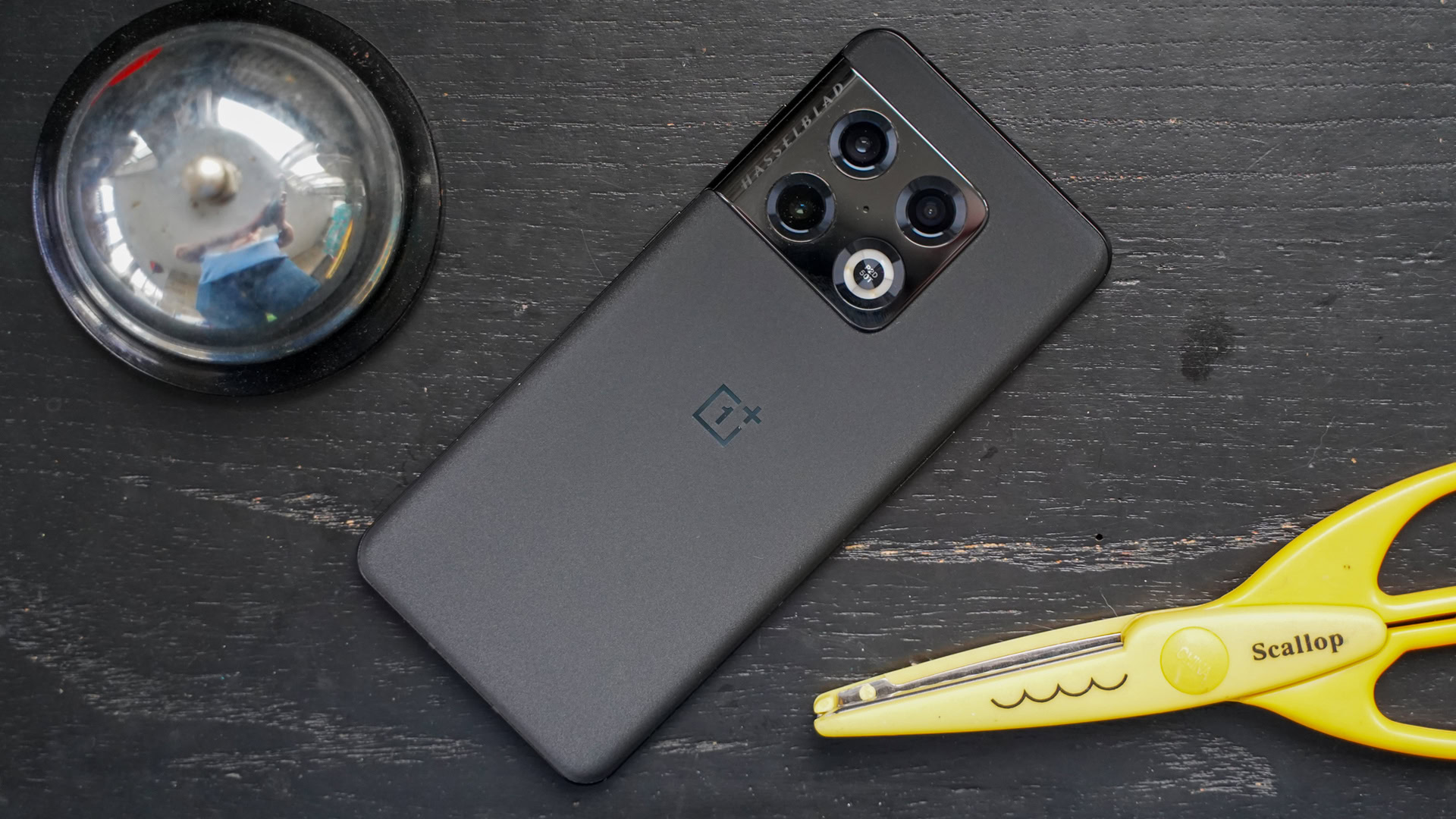
If there’s one thing about OnePlus you can rely on, it is the company’s consistency with respect to hardware design. The OnePlus 8 Pro, 9 Pro, and 10 Pro are similar devices that stick strictly to OnePlus’ script. How does that impact the 10 Pro?
The core shape and user experience of the 10 Pro’s hardware is almost unchanged year over year. That means curved glass on the front, a metal frame, and curved glass on the rear with a near-identical footprint to its predecessor. I appreciate the compact shape and smooth hand feel. The 10 Pro is a slender, comfortable affair but it could do a lot more to stand out visually. OnePlus upgraded the display glass to Gorilla Glass Victus but kept the rear panel on older Gorilla Glass 5. This isn’t quite up to par with competing flagships, some of which have adopted Gorilla Glass Victus Plus both front and back.
See also: The best OnePlus phones you can buy
The buttons and ports are placed identically to older OnePlus phones, so seasoned veterans will know where to find them. The alert slider and power button, for example, are on the right and the volume toggle is on the left. The power button is somewhat sharp and your finger might get caught on its edge, though this is alleviated if you use a case.
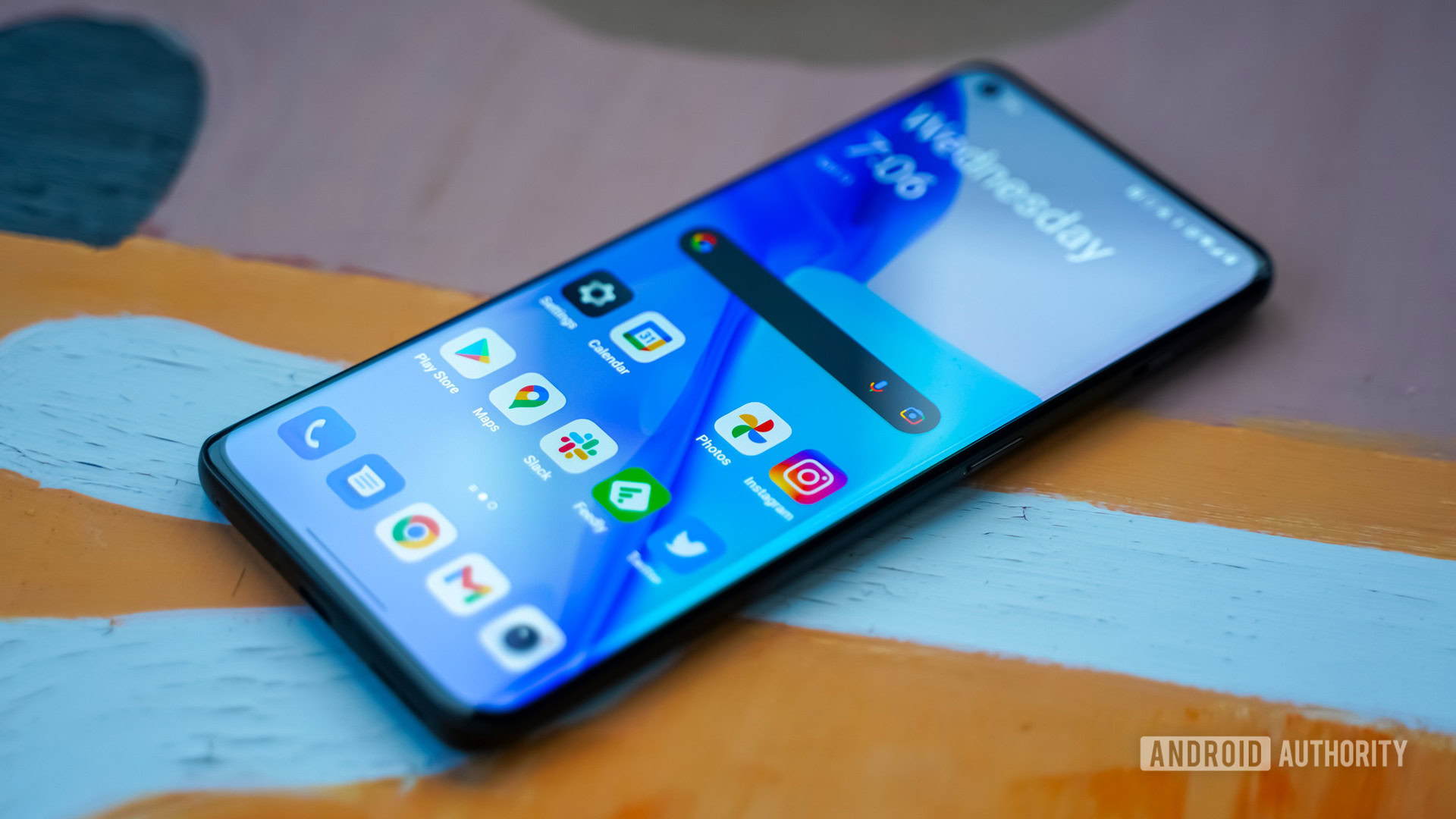
OnePlus saw fit to switch up the finishes and colorways. They’re still black and green, but different black and green. The Volcanic Black of our review unit, in particular, has a grainy look to it even though it’s smooth in the hand. It doesn’t collect fingerprints at all either, which is nice. We would have appreciated some extra color options, as well as wider availability of the Emerald Green model, which is limited to a single memory/storage configuration (it’s basically not available in the US).
OnePlus reimagined the camera module for the 10 Pro. It’s definitely bold, with three large lenses and an equally large flash creating a stove-top effect. Similar to the Galaxy S21 and Galaxy S22 camera module designs, OnePlus blended the camera module into the phone’s metal mid-frame, but not as seamlessly as the way Samsung did. The Hasselblad logo is stamped rather large onto the camera and there’s a weird collection of text painted onto the flash that mars the look. I can’t say I love the camera module, but it at least provides the 10 Pro with some personality.
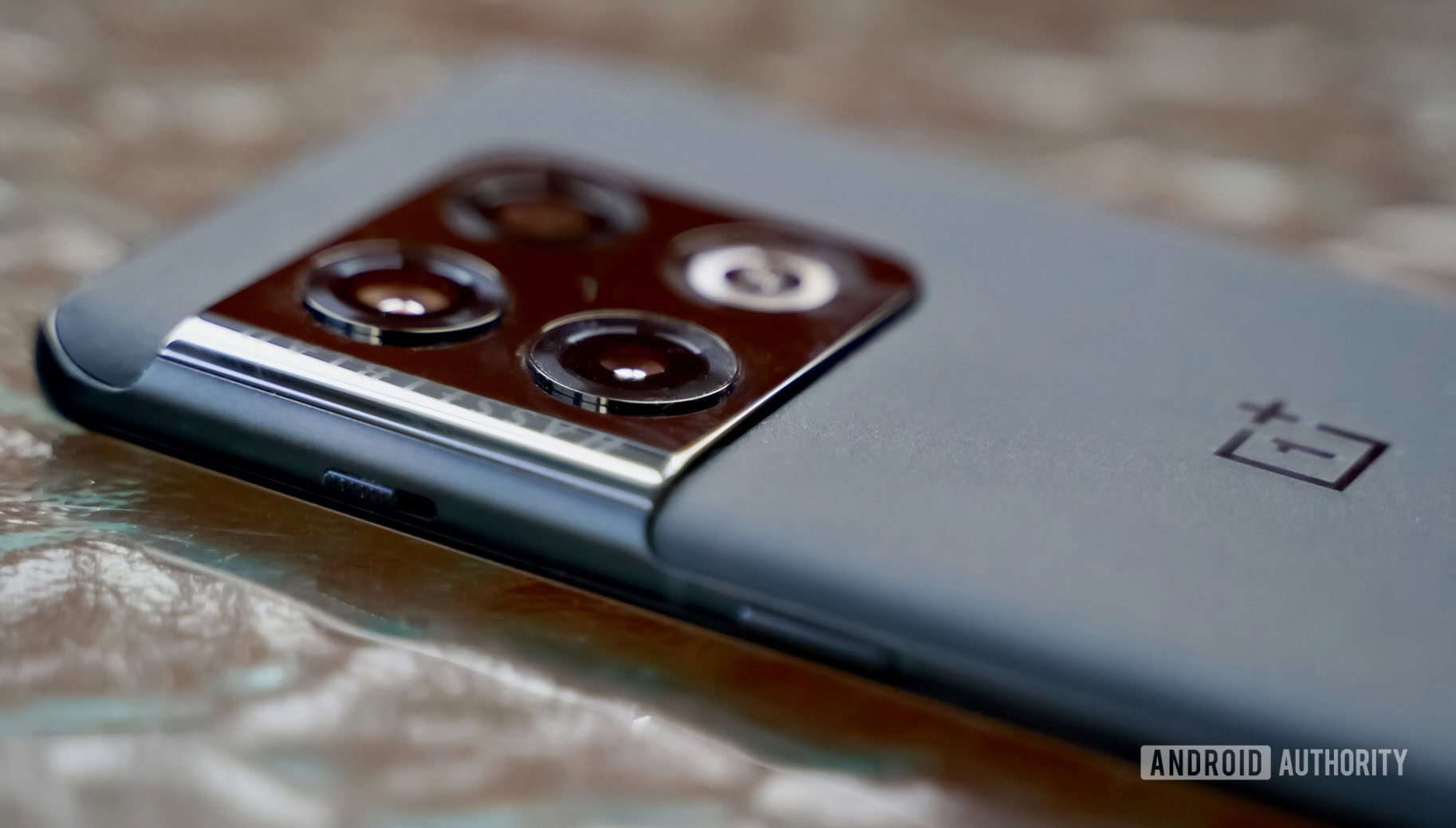
From a flagship perspective, the biggest mistake OnePlus made was to retreat on the IP rating. Where the 9 Pro featured an IP68 rating no matter where you purchased it from, only the US T-Mobile version of the 10 Pro meets the same rating. That leaves most 10 Pro owners with a device that’s not been officially tested for water and dust resistance. OnePlus said costs versus vital features came into play when it made this decision and we think it made the wrong choice.
From a flagship perspective, the biggest mistake OnePlus made was to retreat on the IP rating.
The OnePlus 10 Pro meets the basic metric of having stereo speakers, but it fails in the audio quality department. The bottom-firing speaker is far, far louder than the earpiece speaker. It’s hard to tell that the earpiece speaker is even working. This leaves the sound disturbingly imbalanced, particularly when you hold the phone in landscape orientation to watch videos. It’s so bad you’re better off using headphones for serious music listening or movie watching. At least Bluetooth codec support is top-notch. Shockingly, this phone still scored Dolby Atmos certification.
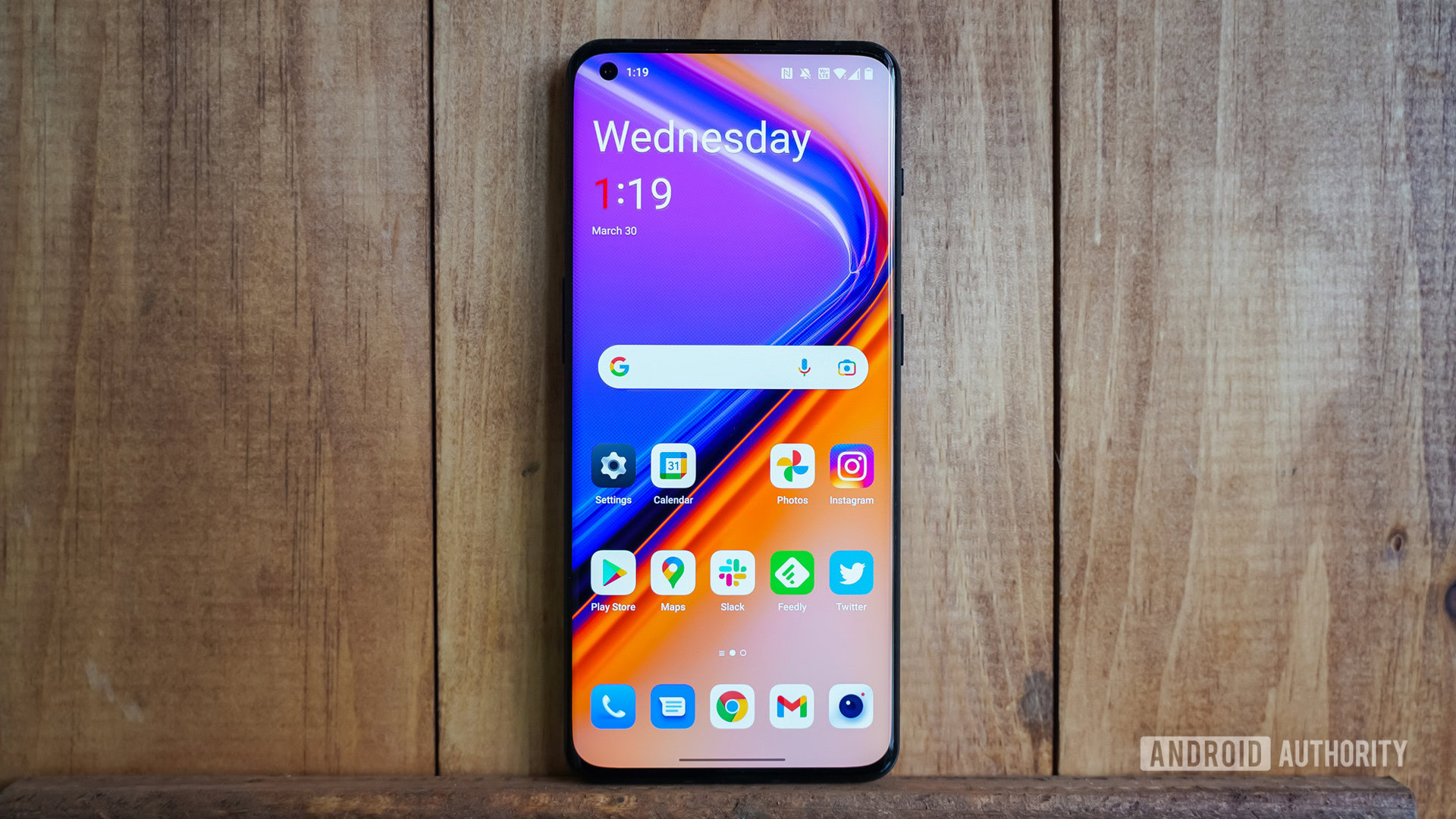
At least the screen is good. Really good. OnePlus was sure to hit every check on the display spec wish list. It’s a 6.7-inch LTPO AMOLED screen with QHD+ resolution, 120Hz refresh rate, 20:9 aspect ratio, and peak brightness reaching 1,300 nits.
In the real world, the screen excels. We’ve enjoyed carrying the OnePlus 10 Pro around and interacting with the screen since launch. It’s fantastically bright, really smooth when set to the 120Hz adaptive refresh rate, and super sharp. Sampling HD content from YouTube and HDR content from Netflix was satisfying across the board. You won’t need to worry about outdoor visibility. Advanced settings let you manage the everyday performance of the panel. It’s one of the best displays out there at the moment.
OnePlus put the fingerprint reader in the perfect spot. It’s right where your thumb expects it to be on the screen when you reach for your device. More importantly, it works beautifully for unlocking the phone in a jiffy. You could take advantage of the face unlock tool, but it’s the insecure variety that relies on just a picture and not 3D metrics. The PIN/pattern alternative is placed oddly high on the screen, which makes it harder to reach and use comfortably. OnePlus sometimes makes the darndest decisions.
It’s what’s on the inside that truly counts, right?
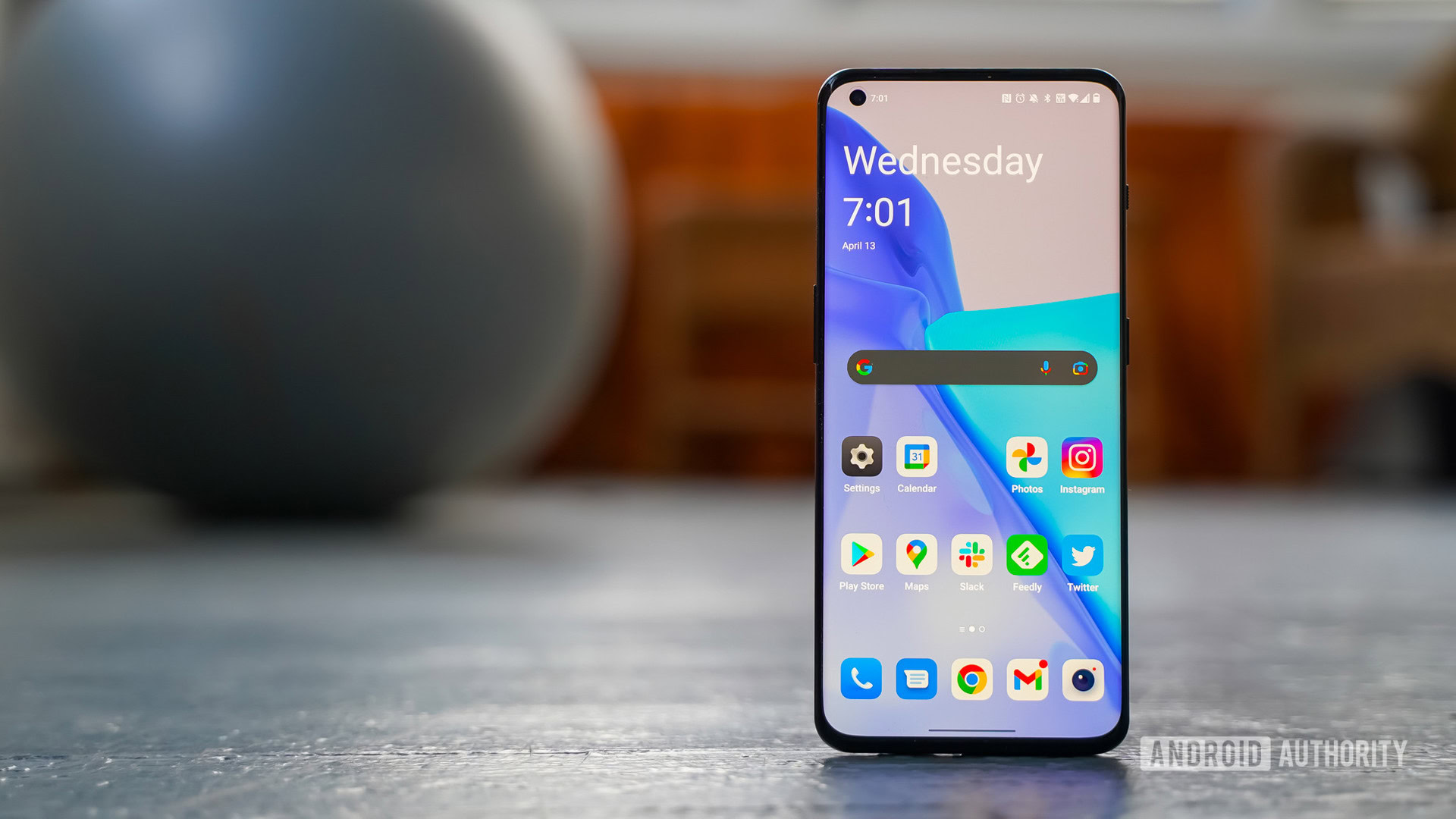
OnePlus stepped up the internals of the 10 Pro to ensure it competes with other flagships — at least on paper. How those specs play out in everyday use was interesting to observe during our time with the phone. In short, the phone’s speed is capped out of the box but it’s still quick enough for everyday use. Moreover, the battery is clearly improved compared to the OnePlus 9 Pro and that means you can get through a day without worry.
The OnePlus 10 Pro has a Snapdragon 8 Gen 1. This is the top Qualcomm silicon available for Android flagships and more or less a must-have for any device playing in this price range. We’ve benchmarked this system on a chip extensively and learned that while it delivers modest CPU gains over the older Snapdragon 888, the 8 Gen 1 really ramps up GPU performance. That’s great news for gaming, in theory.
OnePlus, however, decided to choke the 10 Pro out of the box. The phone is set to a standard mode that reduces processor performance in favor of better battery life. This mostly matters when running benchmarks. Even in this standard mode, the 10 Pro does just fine as an everyday device. That means you can run really big apps, multitask to your heart’s content, and perform every trick a smartphone can turn without fear that it will run into performance problems. If you want or need the phone’s top gear, you’ll need to activate the high-performance mode. You’ll see a hit to battery life, but the phone will then showcase everything the 8 Gen 1 can do.
You’ll get the most out of the OnePlus 10 Pro in the dedicated gaming space. Here, you can ramp up the screen’s touch response rate, limit notifications, enable advanced haptic responses, and more. There’s even a special tool called O-Sync that reduces the time it takes for the processor to talk to the screen, which can speed things up by 30ms or so — enough to make a difference in some games. You’ve also got the GPS Frame Stabilizer, which is meant to reduce frame rate fluctuation for a smoother gaming experience. We tested these features out and gaming is surely fun on the OnePlus 10 Pro. It had no trouble running Asphalt 9 and Genshin Impact.
The limited memory and storage configurations are a little disappointing.
The memory and storage configurations are disappointing. In the US, the only model available offers 8GB of RAM and 128GB of storage. This is the basement for a modern flagship. Global markets have access to a 12GB/256GB variant. OnePlus would have done well to offer a few more options here, including perhaps a 512GB version to keep up with what competitors sell — particularly since the phone doesn’t support microSD cards.
The OnePlus 10 Pro’s 5,000mAh battery lasts longer than its predecessor’s even with the screen set to the highest refresh rate. We’re talking more screen-on time — in the six- to seven-hour range — and more standby time. The phone routinely pushed from breakfast to bedtime without needing a recharge. The 9 Pro really struggled with battery life, so this is a welcome improvement, though it’s still behind the very best in terms of longevity.
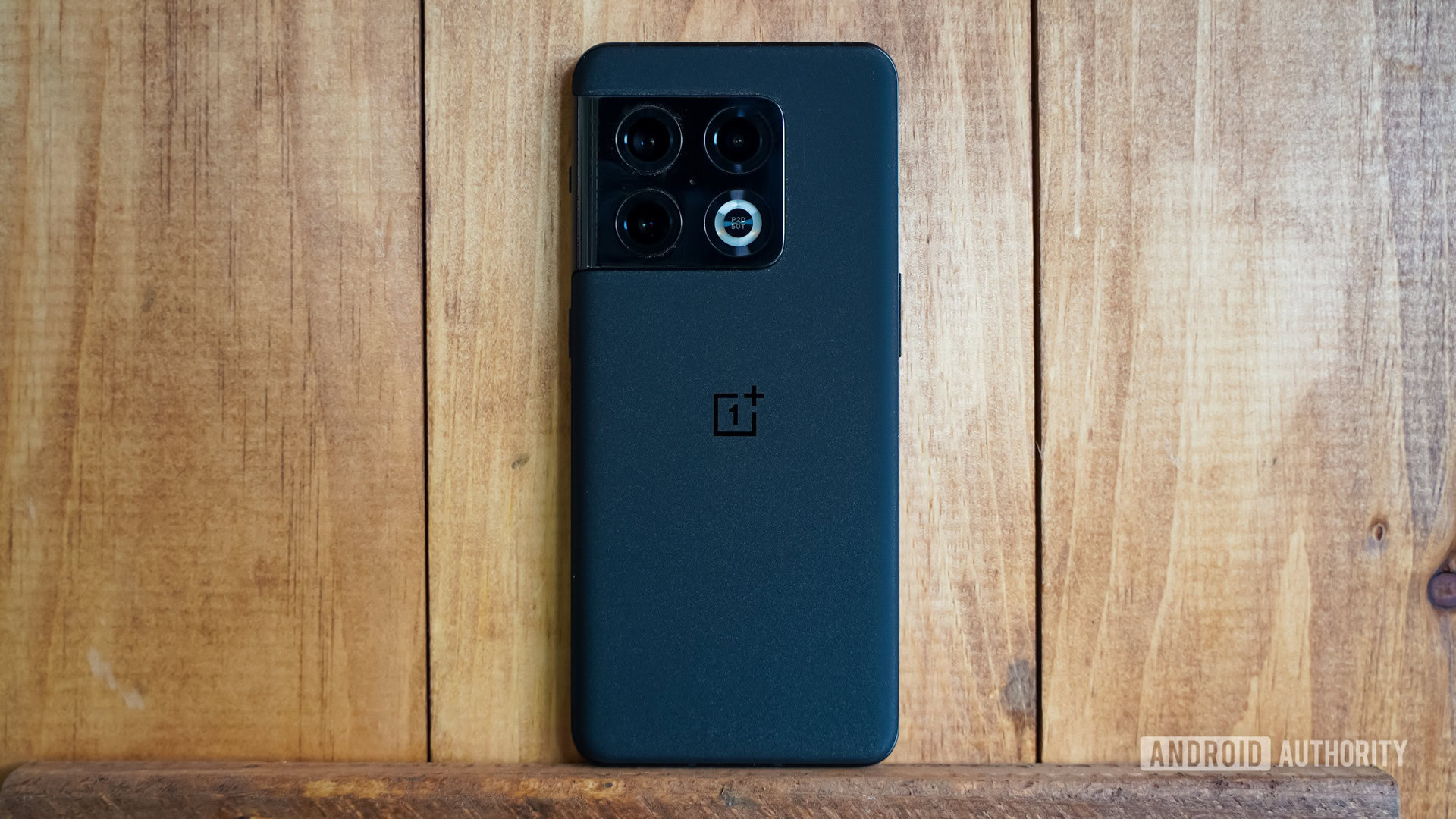
Speaking of recharging, the phone technically supports up to 80W wired charging via SuperVOOC proprietary tech (borrowed from its sister brand, OPPO). The caveat is that the OnePlus 10 Pro ships with a 65W charger in the US, but an 80W charger in the rest of the world. In our testing, we found the difference in charging time was moot. Whichever charger you get, it takes about 35 minutes from empty to full, which is stupid fast. Apple, Google, and Samsung can’t keep up here.
The 10 Pro gets rapid wireless charging, too, thanks to 50W AirVOOC tech. As long as you have the appropriate OnePlus-made wireless charger you’ll get those speeds. Right now, this 50W wireless charger is only available in China, though OnePlus has said it’ll launch worldwide eventually. The rest of the world can at least still use 15W Qi wireless charging as a backup.
OnePlus made some more interesting decisions when it came to the 10 Pro’s radios. First: 5G. The phone skips out on mmWave entirely even though US carriers are still deploying mmWave. That limits it to sub-6GHz, which is fine for the rest of the world. We tested it on Verizon’s network in the US and though the phone can’t use mmWave it latched onto Big Red’s mid-band 5G and did well there. What’s most striking is that the phone doesn’t support AT&T 5G at all. This is a major oversight, as it ignores more than 100 million potential customers in the US.
The OnePlus 10 Pro skips out on mmWave 5G entirely, which mostly impacts potential US customers. AT&T 5G users are totally out of luck.
The OnePlus 10 Pro is also only compatible with Wi-Fi 6 rather than Wi-Fi 6E, which many of its competitors support. Thankfully, Bluetooth is solid with version 5.2 and plenty of codecs on board for media playback via your favorite headphones.
Powerful cameras, middling results
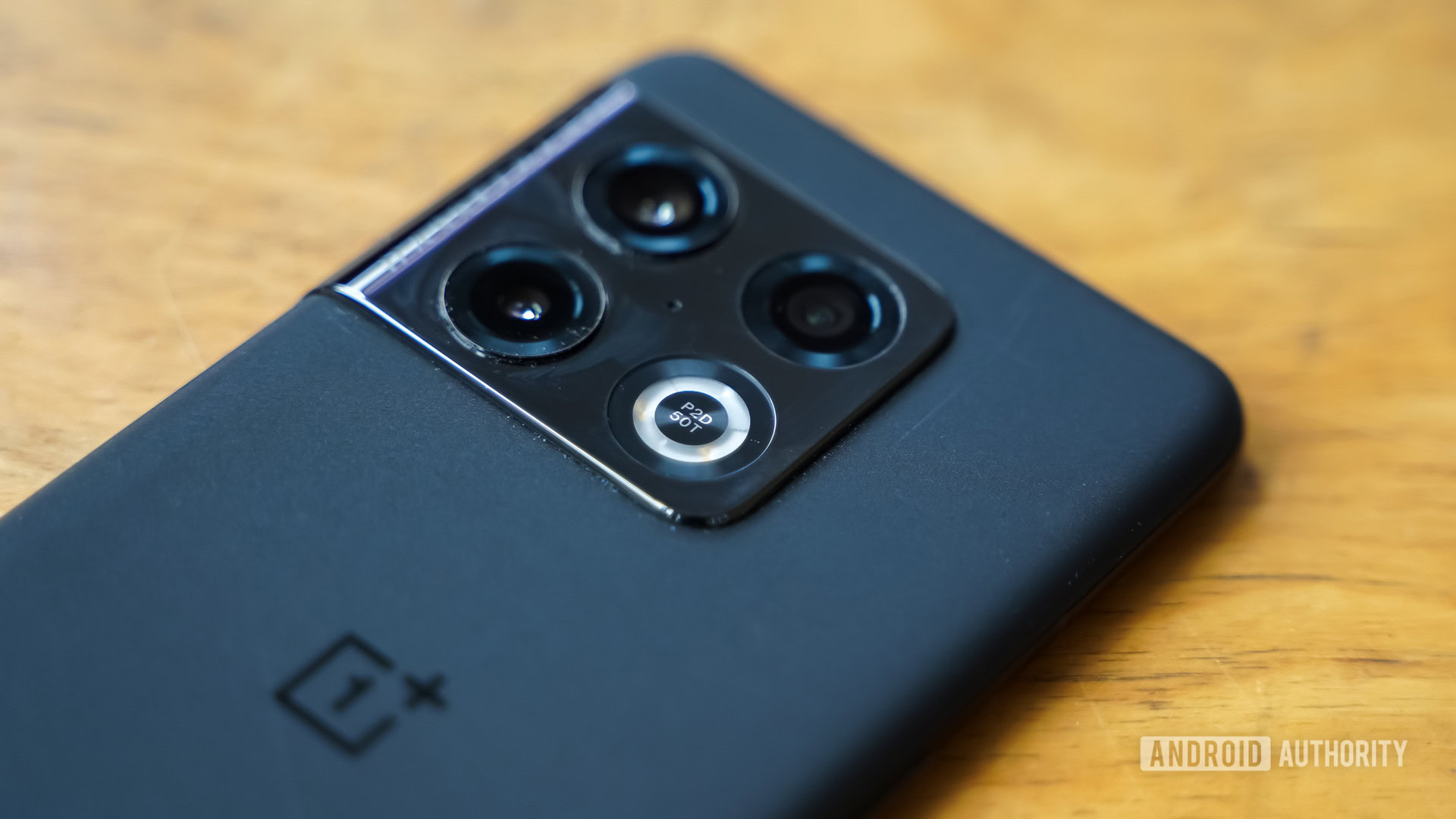
OnePlus has long struggled to dial in the right focus for its smartphone cameras. The company’s offerings have been all over the photographic spectrum and the company employed revised techniques with the 10 Pro.
Check out: OnePlus 10 Pro vs Google Pixel 6 Pro camera shootout
In 2021, OnePlus partnered with famed camera brand Hasselblad in an attempt to buy itself some photo cachet. The multi-year agreement first saw OnePlus adopt Hasselblad color processing. Now in its second year, the agreement covers software and hardware tuning to create the best potential photos.
Stepping back for a second, let’s look at the hardware. OnePlus carried over the same 48MP Sony IMX789 camera sensor from the 9 Pro. OnePlus is binning the sensor by a factor of four so you get 12MP images. The aperture is fast at f/1.8 and the effective pixel size is fine. OnePlus downgraded the ultrawide camera, however, moving from a Sony IMX766 sensor to a Samsung JN1 sensor. This 50MP sensor can snag 110-degree, 150-degree, and fisheye photos, which is more than your standard ultrawide, but it loses autofocus. There’s also an aging 8MP telephoto that can manage 3.3x optical zoom and a 32MP selfie camera that’s double the resolution of the 9 Pro’s self shooter. Together with Hasselblad’s software, this should lead to pretty solid results, right?
At first glance, the photos taken by the main camera look to be okay. They are bright and cheery, particularly if the subject has lots of color. But the color is where OnePlus loses its way a bit. When compared to other phone cameras, the OnePlus 10 Pro over-saturates the color and pushes things too far in some instances. It also leans the white balance too far toward the yellow end of the spectrum. Last, it tends to overexpose certain types of scenes in a way that blows out the background or other details. Certainly, some people will like these results. They can impress with their sense of pop. The problem is the accuracy. The colors and exposures simply don’t match what our eyes saw in real life. While we like to see some processing help photos along, OnePlus goes a little overboard with the 10 Pro.
Photos from the ultrawide and telephoto cameras aren’t any better. Without autofocus, shots from the ultrawide are a little soft and tended to show heavy noise reduction and sharpening. The 110-degree field of view is decent in terms of scale, but the optical distortion in the 150-degree field of view option negates the appeal of having such wide shots. The fisheye lens produces fun results visually, but the quality is not the best. The 3.3x optical telephoto camera also showcases sharpening and soft focus. Using the hybrid zoom tool to take up to 30x telephoto shots is hardly worth the effort.
Low-light shots are noisy and you’ll see lots of flare from light sources. Details are lost in the shadows and some bright sections are blown out.
The OnePlus 10 Pro's camera is not up to par with the best camera phones in the market from Apple, Google, and Samsung.
The selfie camera does a decent job in terms of focus, particularly with portraits, but exposure is all over the place. This camera does poorly in low-light situations.
Video capture ranges up to 8K at 24fps. The 4K footage we captured at both 60 and 120fps looked really good. Focus is sharp, exposure is on point, and there’s very little noise. Colors are boosted some, but it’s not as dramatic-looking as it is with still photos.
In all, the OnePlus 10 Pro camera sounds like an upgrade on paper but it doesn’t perform any better than the OnePlus 9 Pro did out in the real world. More importantly, it’s not up to par with the best camera phones in the market from Apple, Google, and Samsung.
The rest of the story
Software plays a huge role in the smartphone experience. With the 10 Pro, OnePlus got the major pieces of the puzzle into the right places and yet it’s still not quite able to complete the picture.
At a top level, the 10 Pro runs Android 12. The phone comes with three years of system upgrades and four years of security upgrades. That’s a solid enough commitment, though not quite on the level with Google or Samsung. The phone overlays Android 12 with Oxygen OS 12, the company’s user interface platform. The tentpole features of Oxygen OS 12 are the updated OnePlus Shelf, a new version of Work Life Balance, expanded controls over Dark Mode, and Private Safe.
By default, the OnePlus Shelf is accessible by pulling down on the top-right side of the display, similar to the way you’d access the quick settings screen on an iPhone. The Shelf contains a collection of widgets and cards that showcase the weather or your data usage, as well as provide shortcuts to the note-taking app and more. You can rearrange the widgets and cards however you wish but the entire feature feels redundant and can thankfully be turned off completely. With the Shelf off, you have more real estate at the top of the screen to grab the Android quick settings and notifications shade.
The Work Life balance tool is for those who have a really hard time separating their work and personal notifications. Using a white-list technique, you can arrange for only specific, approved apps to send you notifications based on the time of day, the Wi-Fi network you’re using, or your location. For example, you can set it so that Gmail sends notifications about work emails during the day and personal emails during the evening and on weekends. There’s no question some people will find it helpful, as there’s plenty of room for customization.
The Dark Mode controls may be a welcome addition to certain users. If you dislike a pitch-black Dark Mode, for example, you can opt for a medium gray instead. More control is always better.
Oxygen OS 12 looks and feels very buttoned-down and corporate-y.
Private Safe allows you to lock specific files, photos, videos, and other documents into a password-protected folder. This is a feature that’s been around for years and is fairly common. OnePlus is late to the party in this instance.
As for the rest of Oxygen OS 12, it looks and feels very buttoned-down and corporate-y. It’s lost some of the charm it used to hold. At least there’s no bloatware and it runs really well on the 10 Pro.
OnePlus 10 Pro review second opinion: Should you settle?
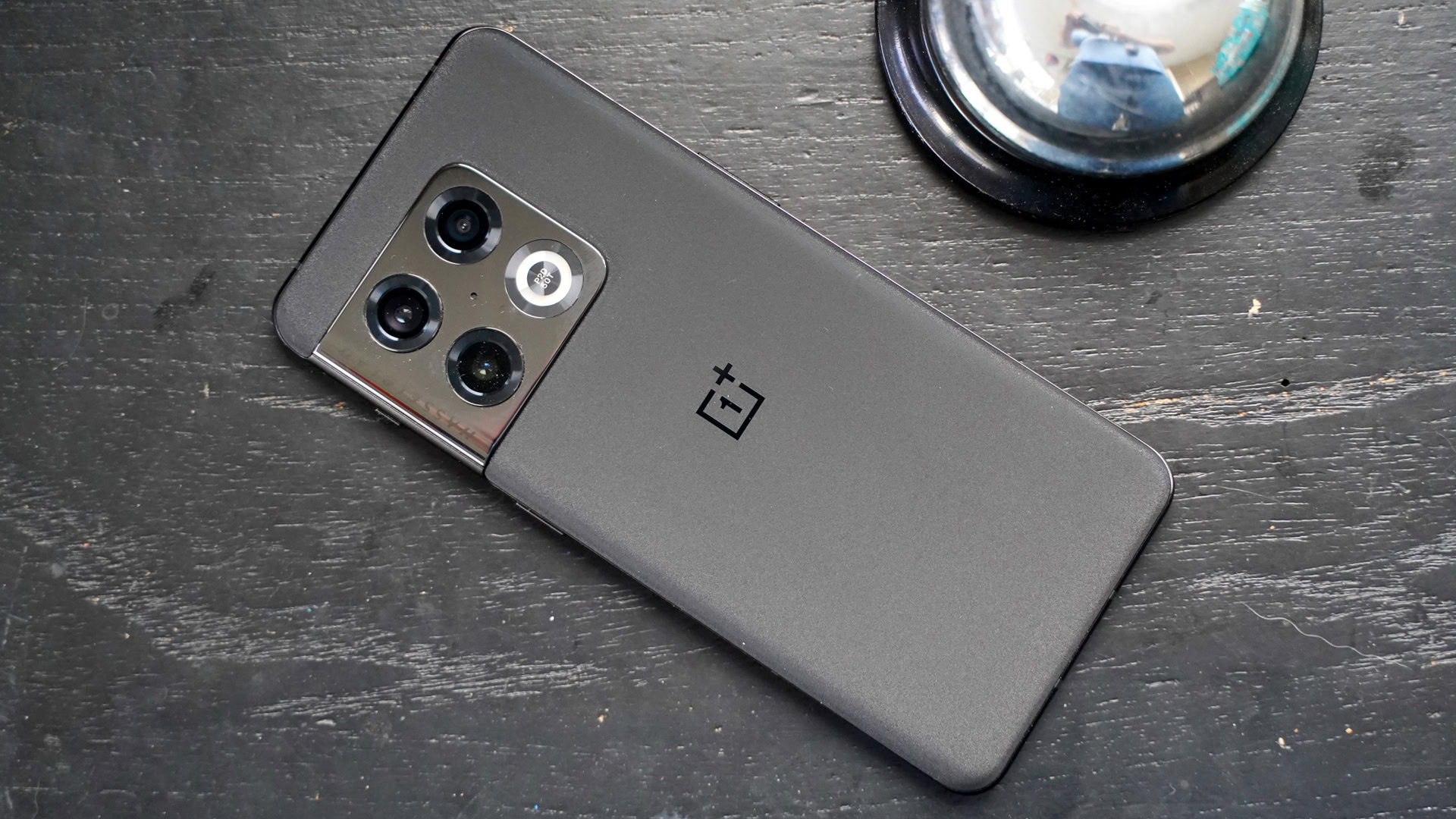
The OnePlus 10 Pro’s story gets complicated once you start to weigh dollars and sense. With a starting price of $899 for the 8GB/128GB model, the phone costs $70 less than its predecessor and $100 less than some of its top competitors. That should be good news. The issue is balancing what you get for that money.
Don’t miss: The best phone deals
There’s a lot of good here. The 10 Pro’s design may be a little conservative and yet it’s still an attractive and well-made piece of hardware. The screen is particularly luscious and the fingerprint reader is nice and snappy. Battery life took a step forward and the phone charges faster than ever. Performance is competitive with other phones in this class and the software commitment from OnePlus is solid enough.
OnePlus cut a few corners, though, and these come back to bite the phone in the rear. For example, the lack of an IP rating on the unlocked model is a real drag and may be a non-starter for some potential buyers. There’s also the lack of mmWave 5G for the US market and Wi-Fi 6E, though these aren’t the end of the world. Last, the 10 Pro’s revised cameras simply don’t perform at the same level as the ever-improving competition.
What hurts OnePlus most is the vast number of devices that play in the $799 to $999 range. For starters, you could save yourself $100 by going with 2021’s OnePlus 9 Pro ($799). It’s a good-looking phone that still performs well and adds an IP rating and third color option. You’ll find the Apple iPhone 13 ($799) at that same price point. It has a top-performing processor and world-class app and accessory ecosystem, and it still manages good battery life to boot. There’s also the Samsung Galaxy S22 ($799), which is a great buy thanks to its capable cameras, excellent software, and industry-leading update commitment. These last two devices do have smaller screens than the 10 Pro, though.
As OnePlus is subsumed by OPPO, it's clear that the former's strategy is changing.
Google’s Pixel 6 Pro ($899) is perhaps the most direct alternative to the 10 Pro. It’s the same price but has drastically better cameras, tougher glass, and an IP rating. Heck, you could even drop to the Pixel 6 ($599) and still enjoy a lot of the same flagship perks and save yourself a whopping $300.
Moving up the cost ladder you might consider the Galaxy S22 Plus ($999), which is a superb and balanced offering from Samsung. It packs excellent battery life and a well-tuned combination of size, usability, camera prowess, and power. Similarly, the iPhone 13 Pro ($999) surpasses the 10 Pro in most performance segments, particularly the camera. These devices are worth the extra money.
As OnePlus is subsumed by OPPO, it’s clear that the former’s strategy is changing. Fans have certainly witnessed those changes with each successive release. The OnePlus 10 Pro feels like it’s 60% OnePlus genetic material mixed in with 40% of OPPO’s. That’s not necessarily a bad thing, but we certainly hope the future offspring of the two brands are more well-rounded than the OnePlus 10 Pro.
